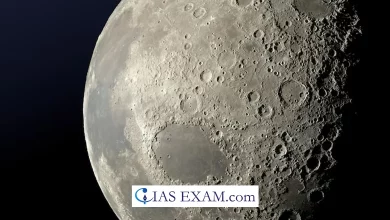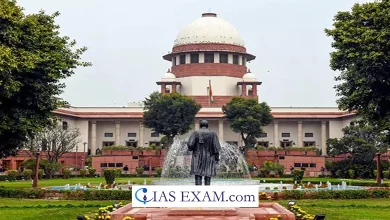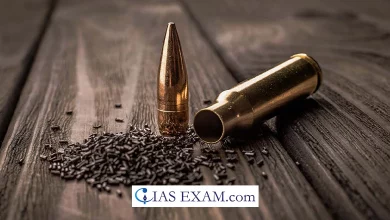Daily Current Affairs for UPSC
Uncontrolled Re-Entries of Satellites

Topic- Space Technology [GS Paper-3]
Context- An open letter published by the Outer Space Institute (OSI) calls for both national as well as multilateral efforts to restrict uncontrolled re-entries of rockets and satellites.
Key Highlights
- The Outer Space Institute (OSI) is a network of world-leading space experts which aims to address challenges arising from the use and exploration of space. It is based in Canada.
Uncontrolled re-entry
- Uncontrolled re-entries is the concept of rocket parts falling back to earth in an unguided fashion once their missions are complete.
- In an uncontrolled re-entry, the rocket stage generally falls.
- Its downward path is determined by its shape, angle of descent, air currents and other such characteristics.
- It will disintegrate as it falls. As the smaller pieces fan out, the potential radius of impact will increase on this ground.
- Some pieces burn up entirely while others don’t burn up at all.
Concerns about the re-entries
- Speed: More than size, it is the speed at which space debris is travelling and it makes them deadly.
- Rise in launches: The number of rocket launches has been surging with the advent of certain reusable rocket stages. Currently, there are more than 6,000 satellites in orbit, most of them in low-earth (100-2,000 km) and geostationary (35,786 km) orbits, placed there in more than 5,000 launches.
- Impact on Land: Most of the rocket parts have landed in oceans principally because the earth’s surface has more water than land. But many have dropped on land as well.
- Population: The risks from uncontrolled re-entries are increasing as the global population grows. Several places have become more densely populated. Conservative estimates place the casualty risk from uncontrolled rocket body re-entries as being on the order of 10% in further decades.
- North vs South: Nations in the ‘Global South face a “disproportionately higher” risk of casualties than the ‘Global North’.
- Effect on Airlines: An impact anywhere on an airline with the debris of mass above 300 grams would produce a catastrophic failure, that means all people on board would be killed.
- Chemical Contamination: If re-entering stages still hold fuel, atmospheric and terrestrial chemical contamination puts another risk.
Examples
- Parts of a SpaceX Falcon 9 which fell down in Indonesia in 2016 included two “refrigerator-sized fuel tanks”.
- Parts of a Russian Rocket in 2018 and China’s Long March 5B rockets in 2020 and 2022 hit parts of Indonesia, Peru, India and the Ivory Coast.
International agreements to tackle it
- There is no such international binding agreement to ensure rocket stages always perform controlled re-entries nor on the technologies with which to do so.
- The Liability Convention 1972 requires nations to pay for damages, not prevent them.
1-in-10,000 threshold
- Certain states have adopted a safety threshold of one predicted casualty per 10,000 launches (0.01%), above which controlled re-entries are supposed to be required.
- This means launches need to keep the chance of a casualty from a re-entering body to be below 0.01%.
Criticism of 1-in-10,000 threshold
- However this threshold is arbitrary and not widely accepted internationally.
- Even those states which use it have often waived the requirement on multiple occasions when compliance is deemed to be unreasonably expensive.
- Most importantly, the 1-in-10,000 threshold does not account for cumulative risks from all launches over a particular period of time.
- The threshold makes little sense in an era when new technologies and mission profiles enable controlled re-entries.
Recommendations by OSI to minimize damage
- While the OSI letter admits that any kind of re-entry will inevitably damage certain ecosystems, it recommends that bodies aim for an ocean in order to avoid human casualties.
- Future solutions must be extended to re-entering satellites as well.
- The focus should also be on developing and using smaller satellites as they are likely to burn up during re-entry.





.png)



